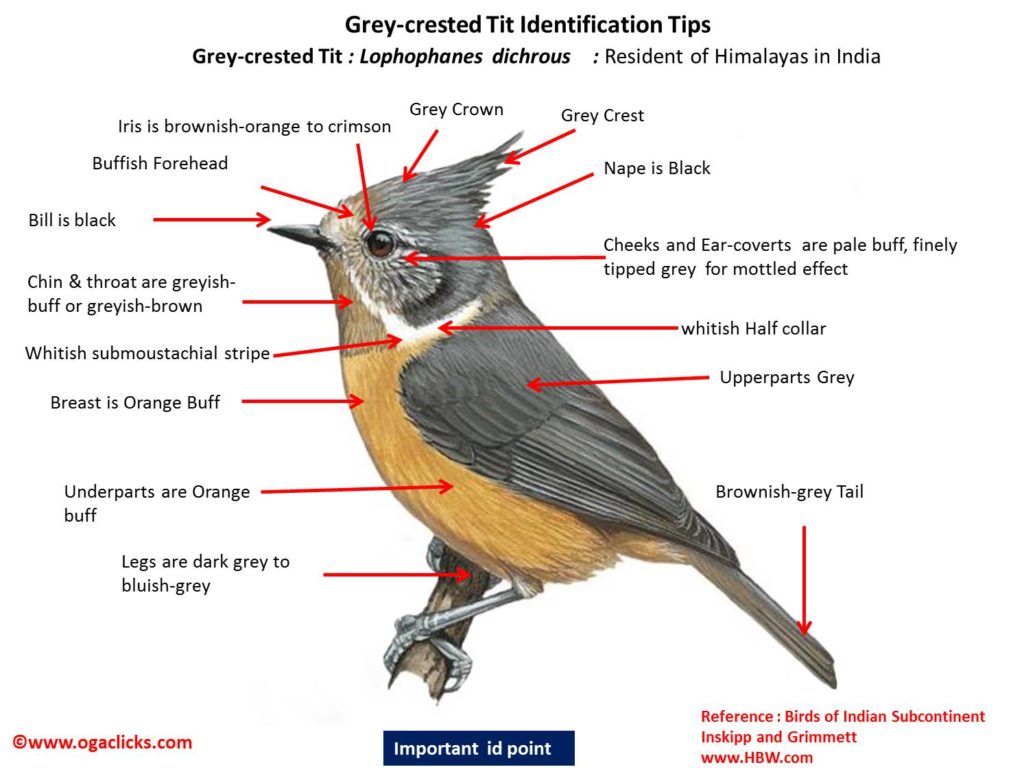Grey-crested Tit

Grey-crested Tit Lophophanes dichrous
Etymology:
- Lophophanes : Greek word lophos-crest ; phanes –showing
- Dichrous : Greek word di– two,double; khroos – complexion
Distribution in India: Resident of Himalayas in India
Description: Size of 11·5–12·5 cm; wt. of 11·2–14 g. It is a medium-sized, plain grey tit with long erect crest and buffish underparts. The nominate race has pale buffish lower forehead, becoming grey on upper forehead and deeper grey on crown and crest. The upperparts, including upperwing-coverts, are mostly uniform plain grey, tinged buffish, except for dark grey upper edge of mantle; tail is darker, brownish-grey, broadly fringed paler or buffish-grey;. The alula, primary coverts and flight-feathers are blackish, finely fringed paler; lores, cheek and ear-coverts are pale buff, finely tipped grey, rear and lower edges of ear-coverts are greyer. It has fairly broad whitish submoustachial stripe and buffish-white half-collar; chin and throat are greyish-buff or greyish-brown. The underparts are orange-buff, tinged warmer brown, also whiter on belly and vent. In worn plumage, the upperparts are slightly darker grey and underparts are paler buff. The iris is variably brownish-orange to crimson; bill is dark grey to black; the legs are dark grey to bluish-grey. Both the sexes are alike.
Habitat: It is found in forests including oak and rhododendron and broadleaf forest. It breeds at 2400–4570m. In non-breeding season comes down to 2200 m.
Food habits: It eats invertebrates and larvae. Found in pairs or small groups; occasionally pairs join mixed-species foraging flocks with other Tits and leaf-warblers. It forages in middle to lower levels of forest trees, also in undergrowth and shrub layers. It forages also on ground, especially in winter, collecting food items beneath dwarf rhododendrons and birch scrub.
Breeding habits: They breed in Apr to Jun. The nest is a pad or small platform of moss, animal fur or hair and feathers, placed in hole or cavity in tree trunk or old stump. They lay a clutch 4–5 eggs and the chicks fed by both parents.